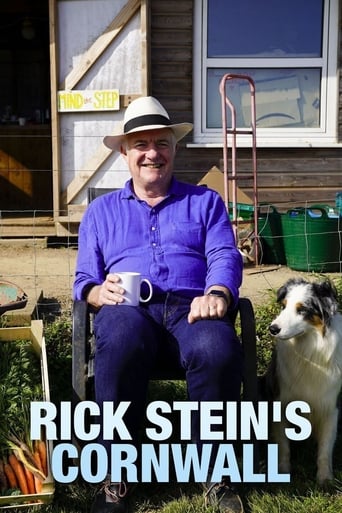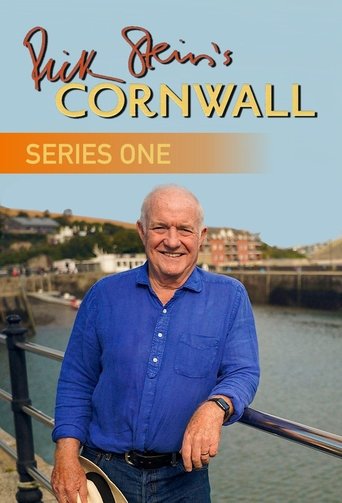Rick Stein's Cornwall Season 2

In this new series Rick Stein reveals the Cornwall that he knows and loves: a unique part of the British isles with a strong sense of identity and a history rooted in its Celtic past. With his famous natural inquisitiveness, Rick shares the road less travelled – championing the food, history, music, art and culture of the county many locals argue should be a country in its own right.
Watch NowWith 30 Day Free Trial!
Rick Stein's Cornwall
2021
Rick Stein takes us once again on a rich journey of discovery around his beloved Cornwall.
Watch Trailer
Rick Stein's Cornwall Season 2 Full Episode Guide
In the final episode, Rick visits the Rame Peninsula. Far from the traditional tourist track, this part of Cornwall is famed for its cliffs and beaches. Rick also meets a beachcomber who has found some remarkable objects washed up on the shore. In mining country, Rick explores the history of the Cornish pasty and shows us how to cook them the proper Cornish way.
In the town of Looe, Rick learns about a time when the Cornish were taken as slaves by North African pirates. He joins one of the last fishing boats in St Mawes and uses the catch of lemon sole to make a warm, delicious salad. In Newlyn, he meets two entrepreneur chefs who cook mackerel to perfection.
On the banks of the River Tamar, Rick visits a little-known mausoleum with a rather macabre story. On the wild Atlantic coast, near Bedruthan Steps, he meets fellow chef Emily Scott, who recreates the meal she cooked for President Joe Biden during the recent G7 summit. And Rick takes to the waves with an inspirational organisation who offer therapy using the power of surfing.
Following in the footsteps of Turner, one of Britain’s most loved artists, Rick discovers how much the Cornish landscape influenced his work. At Newlyn Fish Market, Rick counts in the daily catch with the head auctioneer, who tells him how the market has adapted to modern times. Surrounded by beautifully fresh fish, Rick takes away some monkfish and fires up his BBQ to make a grillade of monkfish with roasted red pepper sauce. At Caerhays Castle, home to the nation’s largest collection of magnolias, Rick discovers how this corner of Cornwall was once home to some of the great Victorian plant hunters.
Rick joins a team diving for razor clams, which he takes back to the kitchen to make a quick but tasty dish of grilled shangurro clams. At the end of Newlyn Pier, Rick visits a scruffy little hut that until recently played a huge part in determining the height of everything around us. And in the Penlee Museum, Rick is shown some of the beautiful items made a century ago by fishermen using Cornish copper and meets a metalworker who is bringing copperwork back to the town.
In our fields and hedgerows are plants that are delicious as well as plants that are deadly, as Rick learns from a professional forager who takes him on a tour around the beautiful Camel Estuary. Inspired, Rick creates his own version of a Greek Horta pie with foraged greens. Afterwards, it’s a trip down memory lane with his long-time fish supplier Matthew Stevens, who remembers Cornwall before the tourists came. Over a pint with actor, comedian and passionate Cornishman Ed Rowe, star of the BAFTA winning film Bait, Rick examines the impact of second home ownership on Cornish communities.
Rick is in Falmouth, discovering that far from being 'that bit on the end of Britain’, Cornwall used to be at the very heart of the British Empire’s communication system and is still very much a working port today. It was the seas around Cornwall that inspired author William Golding to write his famous novel, Lord of the Flies, and his daughter Judy tells Rick how her father was horrified by what he witnessed during the war. And Rick gets to enjoy dishes prepared for him by an innovative young chef called Andy Tuck, who cooks everything over wood – forget your BBQ, this is cooking with fire on a whole new level
On a visit to a dairy, Rick meets a man who is paid to eat 700 samples of cheese a week and cooks his sumptuous cheese and chive scones. His next stop is the salty old fishing town of Newlyn, the unlikely setting of one of Britain’s most revolutionary art movements. Rick discovers an intriguing tale of deception behind one of the most famous paintings produced here.
Rick boards the ferry in Penzance to take him to the Isles of Scilly, a group of islands which were once part of Cornwall. Here, he finds out about the islands’ rich history, including one of the Royal Navy’s worst shipping disasters in which 1,500 men lost their lives. In the world-famous gardens of Tresco, Rick meets a beekeeper attempting to breed a native Scillonian honeybee to deal with the harsh Atlantic climate. This inspires Rick to cook a honey pudding with Cornish ice-cream and a butterscotch sauce.
Cornish king crab is on the menu for Rick as he heads out of Newquay to catch and cook this tasty crustacean. Afterwards, he takes a trip inland to Bodmin Moor to meet Robin Hanbury Tenison, one of the 20th century’s last great explorers. His farm is home to one of Cornwall’s most ambitious rewilding projects, where Robin’s son, Merlin, has recently introduced a pair of wild beavers who are doing their best to restore biodiversity in this corner of Cornwall.
Following in the footsteps of one of his literary heroes, Rick roams the dramatic north Cornish coast to tell the story of one of Britain's best-loved writers, Thomas Hardy, and his little-known love affair with a Cornishwoman. Another famous writer, Dylan Thomas, dubbed Rick's next stop, Mousehole, as "the loveliest village in Britain".
Cornwall has more than its fair share of folktales. Perhaps the most famous is found near Land's End, where Rick recounts the tale of the Mermaid of Zennor. A short distance away, Rick joins a small army of seaweed harvesters who are feeding an increasing appetite for a natural food more common in Japan.
Rick meets "Springwatch" presenter and biologist Gillian Burke, who takes Rick on a walk through a rare habitat called an Atlantic temperate rainforest on the banks of the Helford River. Rick also follows his passion for cured meats when he discovers a husband-and-wife team making premium Cornish salami.
Rick Stein travels to St Ives to meet one of Britain's little-known artists, Alfred Wallis. In the shadow of Bodmin Moor Rick visits a very rare collection of medieval stained-glass windows in the church of St Neot. It is here he ticks off an item on his bucket list by taking part in a rather unusual celebration called Oak Apple Day, marking the occasion when Charles II became king.
Rick Stein takes a trip back in time to his early days running a nightclub in Padstow before a bracing dip in Bude's stunning sea pool. Then Rick braves the notoriously wild Atlantic waters to learn about the ancient fishing method of handlining at Sennen Cove off Land's End. The catch of the day is some deliciously plump pollock, which Rick uses to make the ultimate fish pie for the head gardener of Tresillian House, John Harris.
Free Trial Channels
Seasons











































